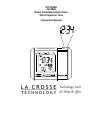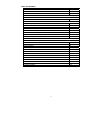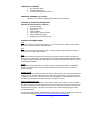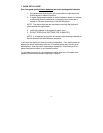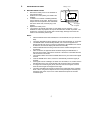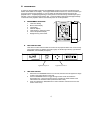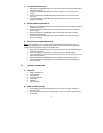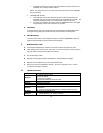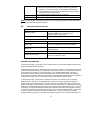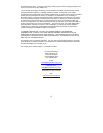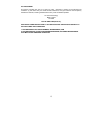
3
INVENTORY OF CONTENTS
1. WT-5360 Alarm Clock
2. AC adapter/transformer
3. Instruction manual and warranty card.
ADDITIONAL EQUIPMENT (not included)
Two fresh 1.5V AA alkaline batteries (optional when using AC adapter)
FEATURES OF PROJECTION ALARM CLOCK
Operation of these features is in section III.
1. Time Zone Setting
2. Manual Time Display
3. Year Setting
4. Calendar Display
5. Time Display in 12/24 Hour Mode
6. Indoor Temperature Display
7. Daylight Saving Time (DST) On/Off
GLOSSARY OF COMMON TERMS
LCD
“LCD” is an acronym for ”Liquid Crystal Display”. This is a common type of display screen used in
televisions, computers, watches, and digital clocks.
LED
“LED” is an acronym for “Light-Emitting Diode”. This type of light is used to illuminate a variety of
displays such as a digital clock or watch.
NIST
The National Institute of Standards and Technology (Time and Frequency division) maintains the
primary frequency standard for the United States. The NIST also coordinates the United States time
and frequency standards with other world standards. The NIST provides time and frequency services
for United States clientele.
WWVB
The WWVB is an AM radio station in Ft. Collins, Colorado, managed by the NIST. The WWVB’s
function is to broadcast time-of-day information derived from the NIST atomic clock, located in
Boulder, Colorado.
ATOMIC CLOCK
An atomic clock is an extremely accurate time device measuring time by the movements of electrons
in cesium atoms. The NIST atomic clock is one of the most precise clocks in the world, accurate to
10 billionths of one second. The NIST’s atomic clock contributes to the international group of clocks
calculating the Coordinated Universal Time (UTC)—the official world time.
RADIO CONTROLLED TIME
A radio controlled time device is often confused with an atomic clock. However, a radio controlled
time device receives its time information from the atomic clock each day through an internal antenna.
The radio controlled time device searches for an exact time signal every night when the signal from
the WWVB is the strongest. The signal can be received up to 2,000 miles away through a radio
controlled time device.
For more information regarding the NIST, WWVB, atomic clock, and radio controlled time, please visit
the NIST official website: http://www.boulder.nist.gov/timefreq/stations/wwvb.htm



